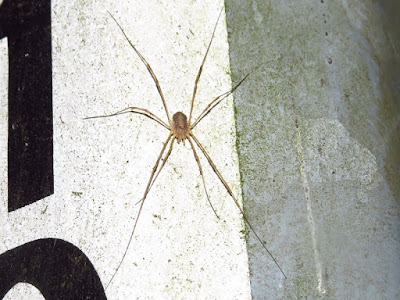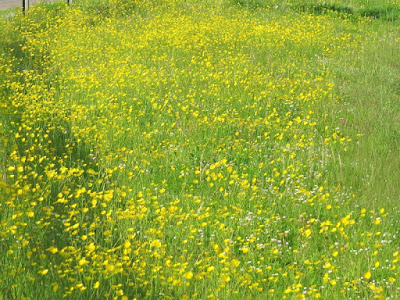16.0°C > 18.0°C: Humid and mainly overcast. Some breaks developed for a while. Light SSE breeze, veering SW. Good or very good visibility.
Sunrise: 04:51 BST
* = a photo today
Priorslee Lake: 05:15 – 05:45 // 06:25 – 09:30
(111th visit of the year)
A deliberately later start on a dull morning means that some warbler numbers and, especially, Jackdaw and Rook numbers are reduced.
Bird notes:
- One additional adult Canada Goose has managed to avoid being ejected.
- Two (near) adult Mute Swans flew N at 07:15 0 – a strange date
- One juvenile Coot from brood #7. Also one from brood #9. The recent rather low count of adults may indicate that some are sitting on second broods, hidden in the reeds.
- A resurgence of Starlings, all adults, collecting food from the academy playing field suggests that at least some of them are having a replacement brood – this species is not normally double-brooded. I guess they must have suffered in May's cold weather.
Overhead:
- 4 Canada Geese: two duos outbound
- 3 Greylag Geese: single and duo inbound
- 2 Mute Swans
- 7 Wood Pigeons
- 1 Cormorant again
- 4 Jackdaws
- no Rooks
Hirundines etc., noted:
- 4 Swifts
- 1 Barn Swallow
- 2 House Martins yet again
Warblers noted (the number in brackets is singing birds):
- 15 (12) Chiffchaffs
- 10 (8) Reed Warblers
- 12 (12) Blackcaps
- 6 (4) Garden Warblers
- 3 (2) Common Whitethroats
Count from the lake area
- 3 + 3 (1 brood) Canada Geese
- 2 + 5 (1 brood) Mute Swans
- 6 (3♂) Mallard
- no Moorhens
- 19 + 2 (2 broods) Coots
- 6 Great Crested Grebes still
On / around the street lamps pre-dawn:
- 1 harvestman sp., perhaps Opilio canestrinii
Noted later:
Moths:
- *Plain Gold (Micropterix calthella)
- *Common Nettle-tap (Anthophila fabriciana) again
Bees / Wasps.
- *Field Cuckoo Bumblebee (Bombus campestris)
- Common Wasp (Paravespula vulgaris)
Hoverflies:
- *Marmalade Hoverfly (Episyrphus balteatus)
- *Migrant Hoverfly (Eupeodes corollae)
- *Chequered Hoverfly (Melanostoma scalare)
- *probable Superb Ant-hill Hoverfly (Xanthogramma pedissequum)
Damselflies:
- Common Blue Damselfly (Enallagma cyathigerum)
- Blue-tailed Damselfly (Ischnura elegans)
Other Flies
- Scorpion Fly (Panorpa sp.)
- Black Snipe Fly (Chrysopilus cristatus)
- dagger fly sp.
Bugs:
- Dock Bug (Coreus marginatus)
- Red-and-Black Froghopper (Cercopis vulnerata)
Beetles:
- 7 Spot Ladybird (Coccinella 7-punctata)
- *14-spot Ladybird (Propylea quattuordecimpunctata)
- Nettle Weevil (Phyllobius pomaceus)
- *possible Oedemera lurida
- *Soldier beetle sp.
Other things:
- Common or European Earwig (Forficula dentata)
Snails:
- White-lipped Snail (Cepaea hortensis)
Spiders:
- Stretch spider sp (Tetragnatha sp.)
- *Spider_1: to be identified
- *Spider_2: to be identified
Mammals:
- Grey Squirrel
Flowers new for the year:
- *Hop Trefoil (Trifolium campestre)
- Bramble [Blackberry] (Rubus fruticosus agg.)
- *Early Marsh Orchid (Dactylorhiza incarnata)
- White-lipped Snail (Cepaea hortensis)
Spiders:
- Stretch spider sp (Tetragnatha sp.)
- *Spider_1: to be identified
- *Spider_2: to be identified
Mammals:
- Grey Squirrel
Flowers new for the year:
- *Hop Trefoil (Trifolium campestre)
- Bramble [Blackberry] (Rubus fruticosus agg.)
- *Early Marsh Orchid (Dactylorhiza incarnata)
"For Your Safety" do not mess with a Magpie. Not a species I am moved to photograph too often.
A Common Whitethroat with food for the brood. I think a female – the male would show a greyer head and a more contrasting chest.
Still with a slight yellow gape this juvenile Pied Wagtail is now on its own – no parents and no siblings around.
I said I would try for a better shot of Plain Gold moths (Micropterix calthella). Here is a trio on their favourite – a buttercup.
I also noted I would try for a better specimen of this small moth – Common Nettle-tap (Anthophila fabriciana). I love their antennae.
Another opportunity for me to misidentify a bumblebee. I think this is a Field Cuckoo Bumblebee (Bombus campestris). The rather long antennae, the scruffy appearance and the hint of pale banding on the abdomen persuade me. It is a parasite of the Common Carder Bee (Bombus pascuorum) and needs to resemble it to a degree.
At last! My first Marmalade Hoverfly (Episyrphus balteatus) of the year. This species can be seen in almost any month and is often abundant in Spring. There was also my first for my Newport garden this year when I got home.
This hoverfly is a puzzle. The difference between Common Spotted Field Syrph (Eupeodes luniger) and the Migrant Hoverfly (Eupeodes corollae) is that in the former the yellow markings do not extend to the side of the abdomen. Yesterday I found it hard to determine and today I took this side-view and I am still not sure! I think it is a Migrant Hoverfly despite there being a very small amount of black at the terminus of the yellow.
Dull weather is not always a problem: here the lack of bright light allows the yellow abdomen markings hidden under the folded wings of this Chequered Hoverfly (Melanostoma scalare) to be appreciated.
They are very smart-looking and bright too. The name Superb Ant-hill Hoverfly seems a bit 'made-up' but the scientific name is a bit of a mouthful – Xanthogramma pedissequum.
I thought this would be a female Swollen-thighed Beetles (Oedemera nobilis) - she does not have the swollen thighs. But I rarely see females and when I do they are usually among a group of males on an umbellifer flower. So I think this is an allied species Oedemera lurida.
An easier 'beetle' to ID. It is a 14-spot Ladybird (Propylea quattuordecimpunctata). How's the Latin coming on? I am not too sure how they arrived at 14 as the number of spots.
One I will have to admit defeat over. On the face of it a soldier beetle-type but the pitted elytra does not match any I can find on the web, neither do the antennae which are striped in soldier beetles.
"Now what?" Having climbed to the top of the dead stem of an umbellifer from last year this beetle ponders what to do next while waving its feelers about.
One of two spiders I will report back on.
And the other to be identified.
On a street lamp pole (hence the numbers) was this harvestman with long legs. I think Opilio canestrinii.
Another species I photographed earlier and promised to upgrade when the weather was better. Here is a Yellow Flag (Iris pseudacorus).
Before the Severn-Trent contractors get busy with the mower here is a field of buttercups above the dam. They seem to have taken over from where the Dandelions left off two weeks ago.
I get very confused with orchids and none that I see looks exactly like the illustrations. This is a different species from the Common Spotted-orchid (Dactylorhiza fuchsii) I photographed yesterday – the leaves are unspotted. I think these two spikes are Early Marsh Orchids (Dactylorhiza incarnata).
(Ed Wilson)
------------------------------------------------------------------------------------------------------
Between the lake and The Flash:
- Single adult Moorhen heard at the upper pool.
- Both adult and juvenile Moorhens seen at the lower pool the adult still adding to the nest.
Also
- *The very distinctive cranefly Tipula maxima was in the tunnel under Priorslee Avenue
In the tunnel was this distinctive cranefly Tipula maxima. It was rather dark in there for a hand-held shot – which this is. I tried using flash but that produced a confusing shadow.
(Ed Wilson)
The Flash: 05:50 – 06:20
(Ed Wilson)
------------------------------------------------------------------------------------------------------
The Flash: 05:50 – 06:20
(96th visit of the year)
Very quiet this morning
Bird notes:
- My first Great Spotted Woodpecker here for a long while. The birds in the Ricoh copse have fledged young and this was likely one of those having an explore – not seen well-enough to age.
- Juvenile Great Tits heard.
Birds noted flying over here:
- 1 Lesser Black-backed Gull: immature
Hirundines etc., noted:
- 2 Swifts
- 2 House Martins
Warblers noted (the number in brackets is singing birds):
- 2 (2) Chiffchaffs
- 4 (4) Blackcaps
On /around the water:
- 47 Canada Geese again
- 3 + 2 (1 brood) Mute Swan
- 32 (26♂) Mallard
- 8 (5♂) Tufted Duck
- 3 Moorhens
- 1 juvenile (1 brood) Coots only
- 2 Great Crested Grebes still
(Ed Wilson)
Very quiet this morning
Bird notes:
- My first Great Spotted Woodpecker here for a long while. The birds in the Ricoh copse have fledged young and this was likely one of those having an explore – not seen well-enough to age.
- Juvenile Great Tits heard.
Birds noted flying over here:
- 1 Lesser Black-backed Gull: immature
Hirundines etc., noted:
- 2 Swifts
- 2 House Martins
Warblers noted (the number in brackets is singing birds):
- 2 (2) Chiffchaffs
- 4 (4) Blackcaps
On /around the water:
- 47 Canada Geese again
- 3 + 2 (1 brood) Mute Swan
- 32 (26♂) Mallard
- 8 (5♂) Tufted Duck
- 3 Moorhens
- 1 juvenile (1 brood) Coots only
- 2 Great Crested Grebes still
(Ed Wilson)
------------------------------------------------------------------------------------------------------
On this day
2020
Priorslee Lake
Today's Sightings Here
2019
Priorslee Lake
Today's Sightings Here
2017
Priorslee Lake
Today's Sightings Here
2016
Priorslee Lake
Today's Sightings Here
2015
Priorslee Lake
Today's Sightings Here
2014
Priorslee Lake
Today's Sightings Here
2009
Priorslee Lake
Oystercatcher
(Ed Wilson)
2006
Priorslee Lake
Possible Marsh Harrier
11 Reed Warblers
(Ed Wilson)





















